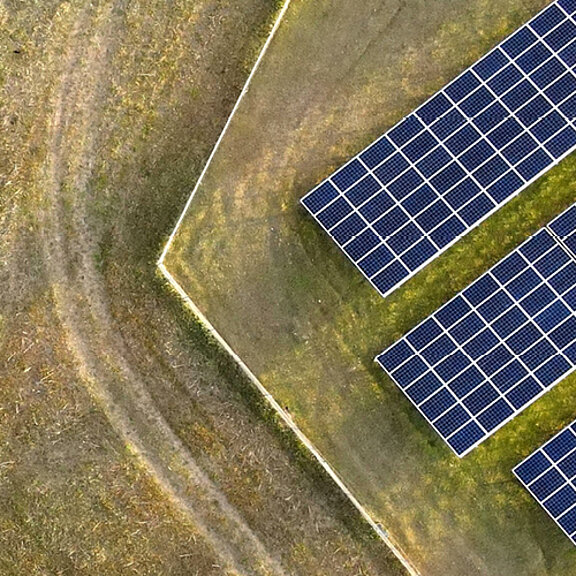

Photovoltaic modules generate DC voltage through solar radiation, which leads to special challenges. This power on is not only dangerous in terms of personal safety, but also increases the risk of electric arcs, which can cause fires due to their high intensity and lack of zero crossing, making them difficult to delete. In addition, the high power on up to 1,500 V DC can lead to increased wear on the system components, which impairs the reliability of operation and makes unplanned maintenance work necessary.
Solar parks are exposed to all weather conditions, which means that the insulation values deteriorate over time. Factors such as humidity, temperature fluctuations and pollution have a direct effect on the level of insulation. This can lead to serious functional impairments that jeopardise the entire operation of the installation and result in high repair costs.
The size and complexity of modern solar parks make it difficult to measure and localise errors quickly and precisely. Undetected insulation faults are a safety risk and can cause costly failures. Without the use of reliable monitoring systems, manual troubleshooting is usually time-consuming, which leads to an increase in operating costs and a reduction in system availability.
To ensure maximum availability and safety, large photovoltaic systems are generally planned, designed and operated as unearthed grids (IT systems). According to DIN VDE 0100-410 (VDE 0100-410):2018-10, 411.6.3.1, IT systems must be monitored with an insulation monitoring device (IMD). Continuous monitoring with a suitable IMD allows deterioration in the insulation level to be detected at an early stage, preventing unexpected failures or hazardous situations.
Insulation fault locating systems (IFLS), which Bender operates under the name Earthfault Detections System (EDS), enable insulation faults to be localised quickly and precisely. The use of these systems leads to a reduction in downtime and a significant increase in the efficiency of operations. To do this, the system must be run correctly and also be in perfect operating state.
Modern contactor and monitoring systems are a further building block for the safety of your installations. They not only help to detect faults, but also optimise overall system safety. A combination of precise monitoring and automatic insulation fault location reduces the risk of accidents and extends the service life of the installation. A central aspect of this is monitoring and analysing the level of isolation in IT systems.
The measured insulation value can be read out directly via fieldbus communication and transmitted to higher-level systems. This makes it possible to track the course of the insulation level over time and compare it with continued relevant data such as weather conditions, temperature curves or voltage changes. These insights make it easier to identify potential correlations and improve the safety analysis and operational optimisation of the installation in a targeted manner.
| Name | Category | Size | Language | Timestamp | D-/B-Number |
|---|---|---|---|---|---|
| Product Overview ISOMETER®/ISOSCAN® | Product Overviews | 5.3 MB | EN | 2024/02/1616.02.2024 | |
| Renewable Energies | Market Segment Brochures | 3.6 MB | EN | 2025/04/0303.04.2025 | |
| EDS309x | Application note | 1.4 MB | EN | 2019/05/1313.05.2019 | D00012 |
| Safe Connection to the Grid VMD460-NA | Flyer | 222.0 KB | EN | 2019/05/1313.05.2019 | D00001 |
| Operating Photovoltaic Installations Safely and Efficiently | Technical article | 457.2 KB | EN | 2019/05/1313.05.2019 | |
| Renewable energies: Photovoltaics | Market Segment Brochures | 2.0 MB | EN | 2023/06/1616.06.2023 | |
| Electrical Safety in Control and Auxiliary Circuits | Technical article | 632.6 KB | EN | 2023/04/2121.04.2023 |
Products
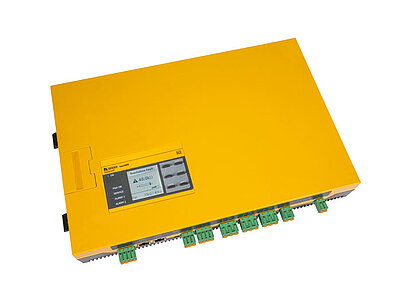
Insulation monitoring device for unearthed systems in photovoltaic installations up to AC 1000 V/DC 1500 V
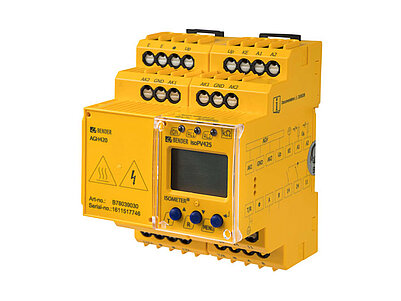
Insulation monitoring device for photovoltaic systems up to AC 690 V/DC 1000 V
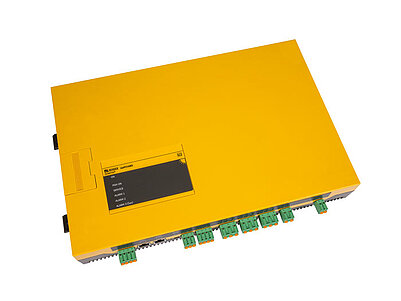
Insulation monitoring device for unearthed systems in photovoltaic installations up to AC 1000 V/DC 1500 V
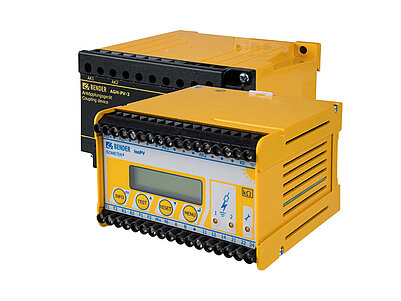
Insulation monitoring device for photovoltaic systems up to AC 793 V/DC 1100 V
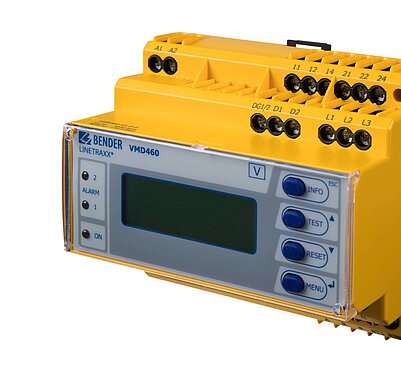
Network and system protection (NS protection) for monitoring the power infeed of power generation systems

Insulation monitoring device for unearthed systems in photovoltaic installations up to AC 1000 V/DC 1500 V

Insulation monitoring device for photovoltaic systems up to AC 690 V/DC 1000 V

Insulation monitoring device for unearthed systems in photovoltaic installations up to AC 1000 V/DC 1500 V

Insulation monitoring device for photovoltaic systems up to AC 793 V/DC 1100 V

Network and system protection (NS protection) for monitoring the power infeed of power generation systems
Recommendations for the Connection of Generating Plant to the Distribution Systems of Licensed Distribution Network Operators
Recommendations for the Connection of Generating Plant to the Distribution Systems of Licensed Distribution Network Operators
Recommendations for the Connection of Type Tested Small-scale Embedded Generators (up to 16A per phase) in parallel with Low Voltage Distribution Systems
Recommendations for the Connection of Type Tested Small-scale Embedded Generators (up to 16A per phase) in parallel with Low Voltage Distribution Systems
Measuring relays and protection equipment - Part 127: Functional requirements for over/under voltage protection
Electrical safety in low voltage distribution systems up to 1 000 v a.c. and 1 500 v d.c. - Equipment for testing, measuring or monitoring of protective measures - Part 8: Insulation monitoring devices for IT systems